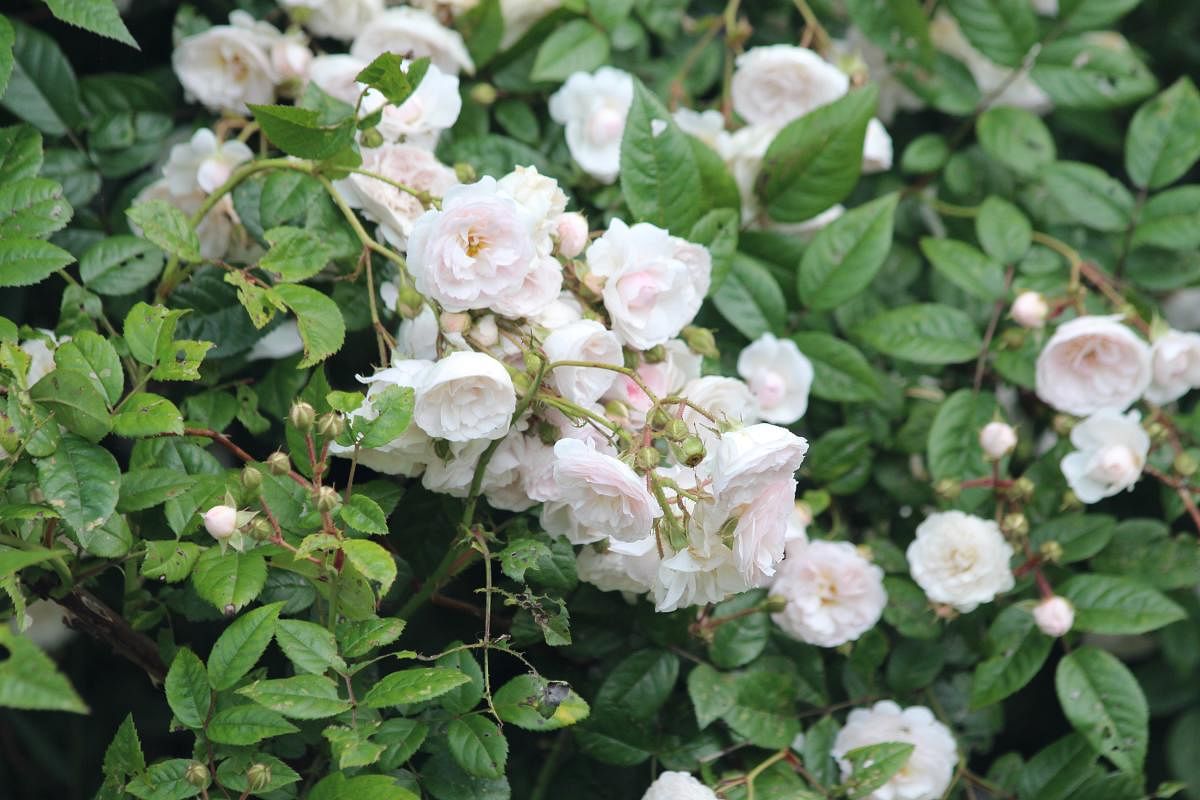
Have you ever felt sad because you lost a plant or a tree? When I got married, I moved into a home with a verdant garden. My mother-in-law had a collection of exciting plants such as manoranjitham (ylang ylang), betel leaf, pepper, cotton, and jasmines. Among them was also a white climbing rose. It was wild and thick, its numerous canes reaching the first floor. If you stood beneath it for a while, the sweet-smelling roses could make you dizzy.
The climber occupied a lot of space as years went by. So we decided to size it down. We assumed the rose plants start afresh once pruned. But none of us knew what the best pruning practice was. We took the help of a gardener who worked nearby. Those days, the popular gardening tool was a hand-forged sickle, rough and raw. He axed the canes down with the sickle and trimmed them to a decent height. Little did we realise we were destroying it. The fresh leaves that appeared after a few days were undersized. The climber died a few months later. I still feel sad and console myself even to this day remembering the giddy joy of standing beneath the bough.
Pruning is like shaking up a plant from its boring routine. It is like unlearning and learning anew. You stimulate growth by trimming and scaling them down. New shoots and branches open up, boosting its growth. But it needs to be done in the right way. Let us discuss how and when to prune your plant.
Gardening kit a must
The most essential thing for pruning is good equipment. A rough cut or a tear in the stem will wound the plant, like what happened to the climber rose. Your gardening kit requires more precise tools like sharp secateurs, looper, and shears. These are available in garden nurseries and online garden stores. Washing and drying them after each use keeps them sharp and extends their longevity. Applying coconut oil to the blades prevents rusting.
Cutting between two nodes of a stem will encourage new shoots. Slice the stem at an angle instead of making a flat cut. Another thing to keep in mind is the shape of the plant. An uneven trimming may destroy its look. Do not prune a young flowering or a fruiting tree that has not yet flowered/given out fruits. It disturbs their growth process. Some plants take four to five years to reach the flowering stage and a few more seasons to give fruits consistently. Lemon, for example, takes nearly five to six years to mature and flower. Pruning their thorny branches will only derail its growth. Place these plants in a place with adequate sunlight and space to grow undisturbed. You can prune them after the fruiting season.
Prune before summer
An essential part of growing a rose plant is trimming it near a node and removing dry buds. Jasmines need to be pruned regularly and their stem shortened to prepare them for the flowering season. Fertilising the soil after pruning gives the essential nutrients. Some vegetable vines like ash gourd, give out numerous male flowers initially before the female ones appear. In such cases, you can try pruning the mature vine branches on the top. The new lateral branches are likely to produce female flowers thus balancing them out.
Do not prune during the winter or the rainy season. Prune before summer begins, which encourages the plant to give out fresh shoots. An age-old practice is to cover the exposed stem with soil, like a wound dressing, which will help it to heal faster.
Pinching is another way to stimulate growth. Tulsi (holy basil) is a good example. You must have seen your grandmother regularly snipping off the top leaves from the tulsi plant and consuming it. Removing the top leaves regularly rejuvenates the plant. Coriander and curry leaves are other plants that benefit from regular pinching.
After pruning a garden, you have to wait for a few weeks for fresh shoots to emerge. You then watch them in delight as they sway with the breeze and new flowers fill the air.
Until next time, happy gardening.
Motley Garden is your monthly potpourri of observations and lessons from gardening and nature.
The author is a botanical artist from Bengaluru. You can find her on Twitter and Instagram as @neelavanam